Search Images
Browse Content (p. 1300)
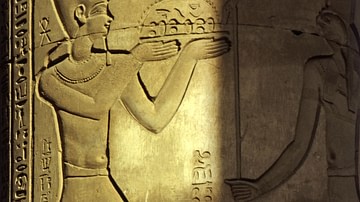
Image
Ptolemy XIII in the Temple at Kom Ombo
A relief of Ptolemy XIII Theos Philopator on one of the pillars in the courtyard of the Temple at Kom Ombo.
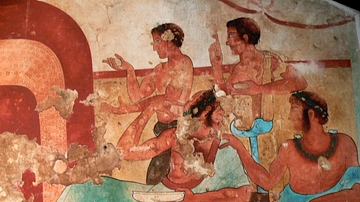
Image
Etruscan Diners, Tarquinia
A detail of a wall painting in the Etruscan Tomb of the Funerary Bed at Tarquinia. The two men are dining, as indicated by their low one-armed chairs. c. 460 BCE.
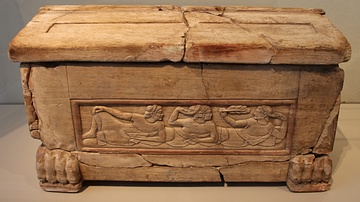
Image
Etruscan Drinking Party
A scene from a stone Etruscan sarcophagus showing a drinking party. Chiusi, 6th century BCE. (Staatliche Museum, Berlin)

Image
Etruscan Banquet Scene
A scene from a stone Etruscan funerary urn depicting a banquet scene. Chiusi, 5th century BCE. (British Museum, London)
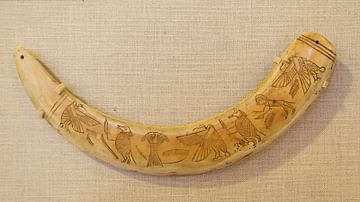
Image
Egyptian Protective Knife
An Egyptian apotropaic knife made from a hippopotamus tusk and designed to ward off evil in a nursery. (Oriental Institute Museum, University of Chicago)
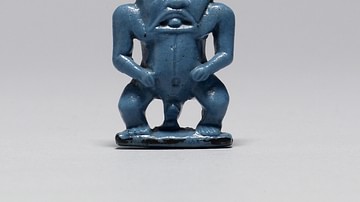
Image
Bes Amulet
A faience amulet of the Egyptian protective deity Bes. Egypt, 950-700 BCE. (Walters Art Museum, Baltimore, Maryland, USA)
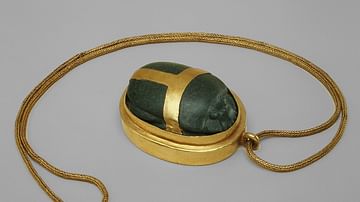
Image
Heart Scarab of Hatnefer
A serpentinite and gold heart scarab pendant. Sheikh Abd el-Qurna, Tomb of Hatnefer and Ramose, Mummy of Hatnefer. Thebes. Egypt, 18th Dynasty, c. 1492-1473 BCE. The text inscribed on the back of the scarab calls for Hatnefer's heart not...
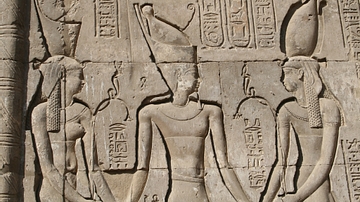
Image
Esna Temple
Detail of the temple wall, Esna, Egypt. The temple was dedicated to the triad of Latopolis.
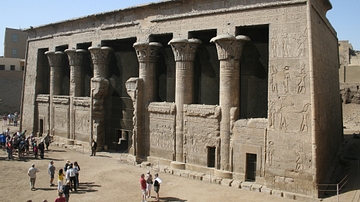
Image
Temple of Esna
Temple dedicated to the triad of Latopolis. Esna, Egypt.
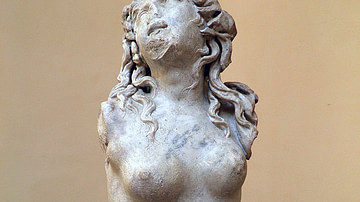
Image
Scylla Marble Statue
Marble statue of Scylla, a monstrous sea goddess who haunted the rocks of a narrow strait opposite the whirlpool daemon Charybdis (Kharybdis). Ships that sailed too close to her rocks would lose six men to her ravenous, darting heads. The...